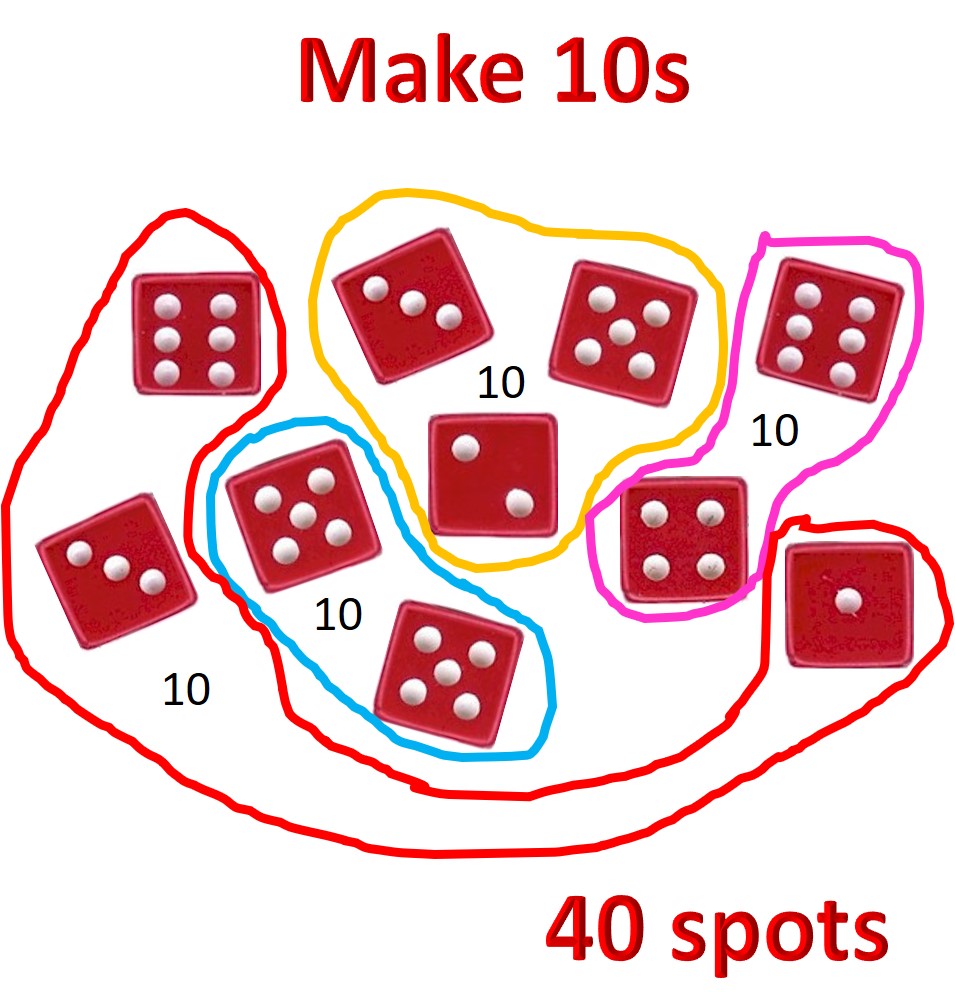Make to 10
When we have taught students about rainbow facts (pairs that make to 10), it is time to have some fun.
I like to offer students many more than two dice to play with and once had two Year 1 boys on the carpet adding 60 dice at the speed of light (metaphorically speaking); they were making groups that add to 10 and then counting in 10s to work out how many spots altogether.
Without a strategy in place this looks pretty tough but when you spot the 10s as shown below it is not so bad.

We are currently working on a mental computation course which is why our heads are in this space right now.
Try this with your students with as many dice as you like and encourage your students to physically move the dice into pairs or combinations ready to add. This is laying down the structure of commutativity, you can add numbers in any order that you like and will always get the same result. Not all students discover this for themselves so we can use this opportunity to make this explicit.
If your students are not quite at this stage yet, check out our online courses, Preventing the Numeracy Gap: Foundation Year and Preventing the Numeracy Gap: Year 1, to help lay the foundations ready for such thinking.
Why not … have some fun!

